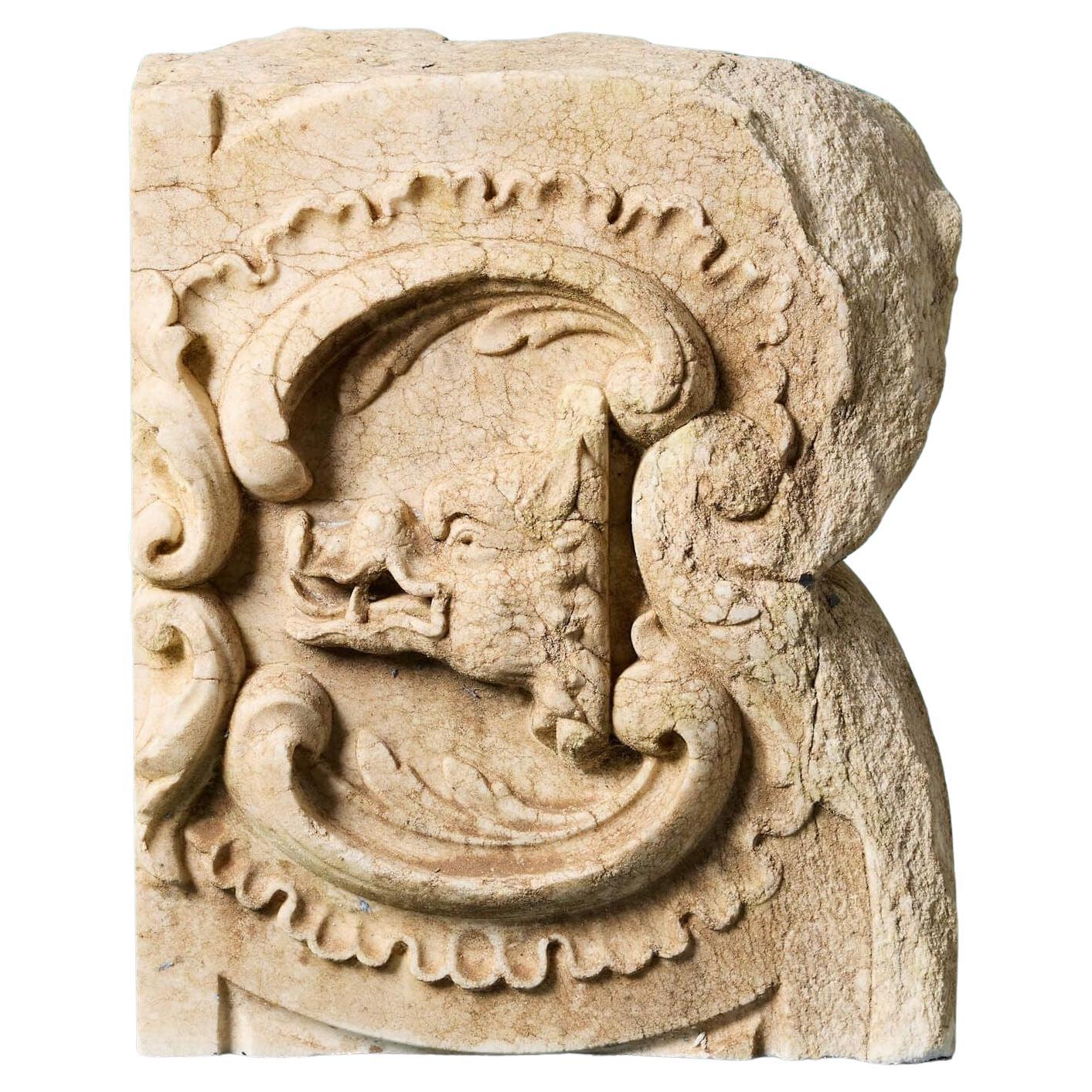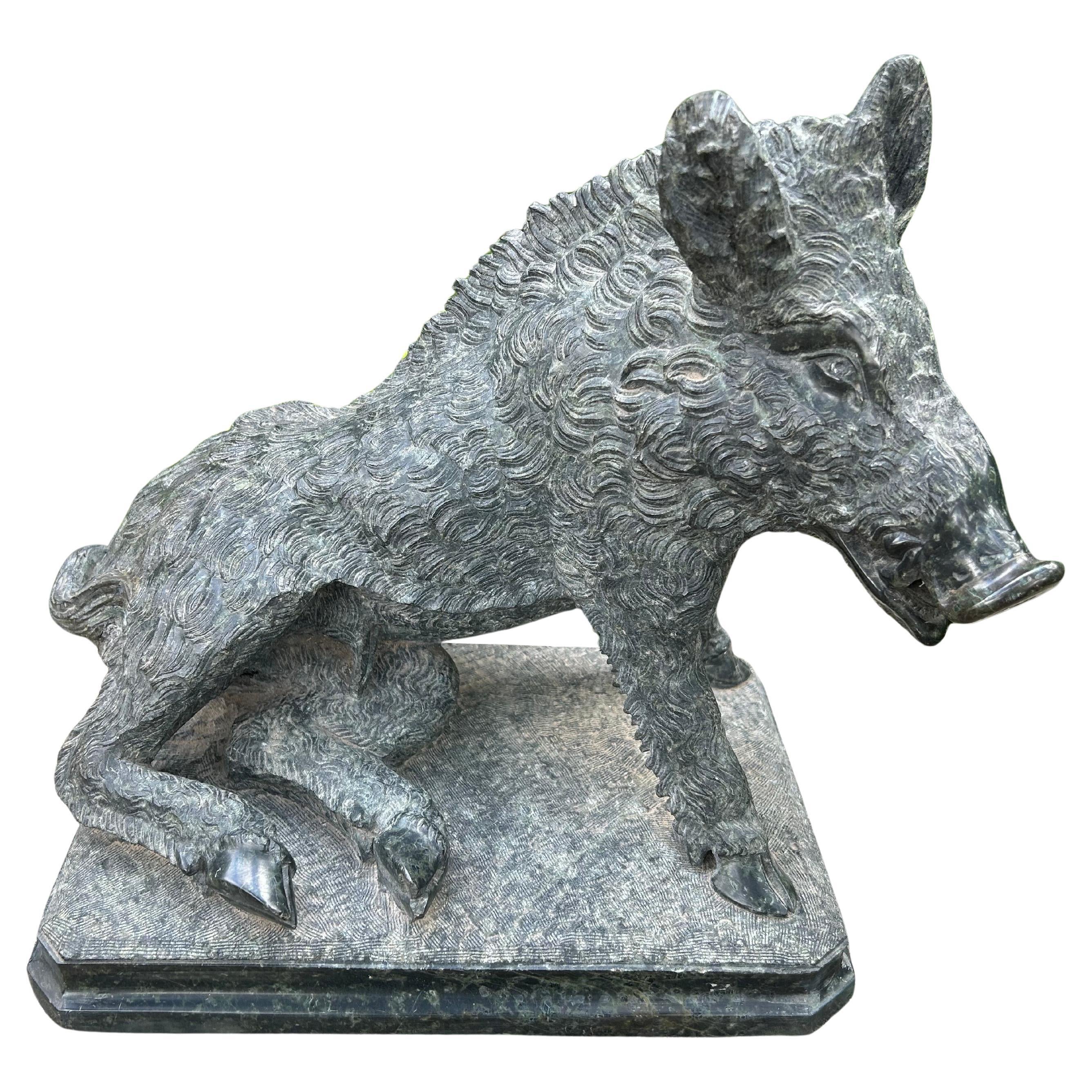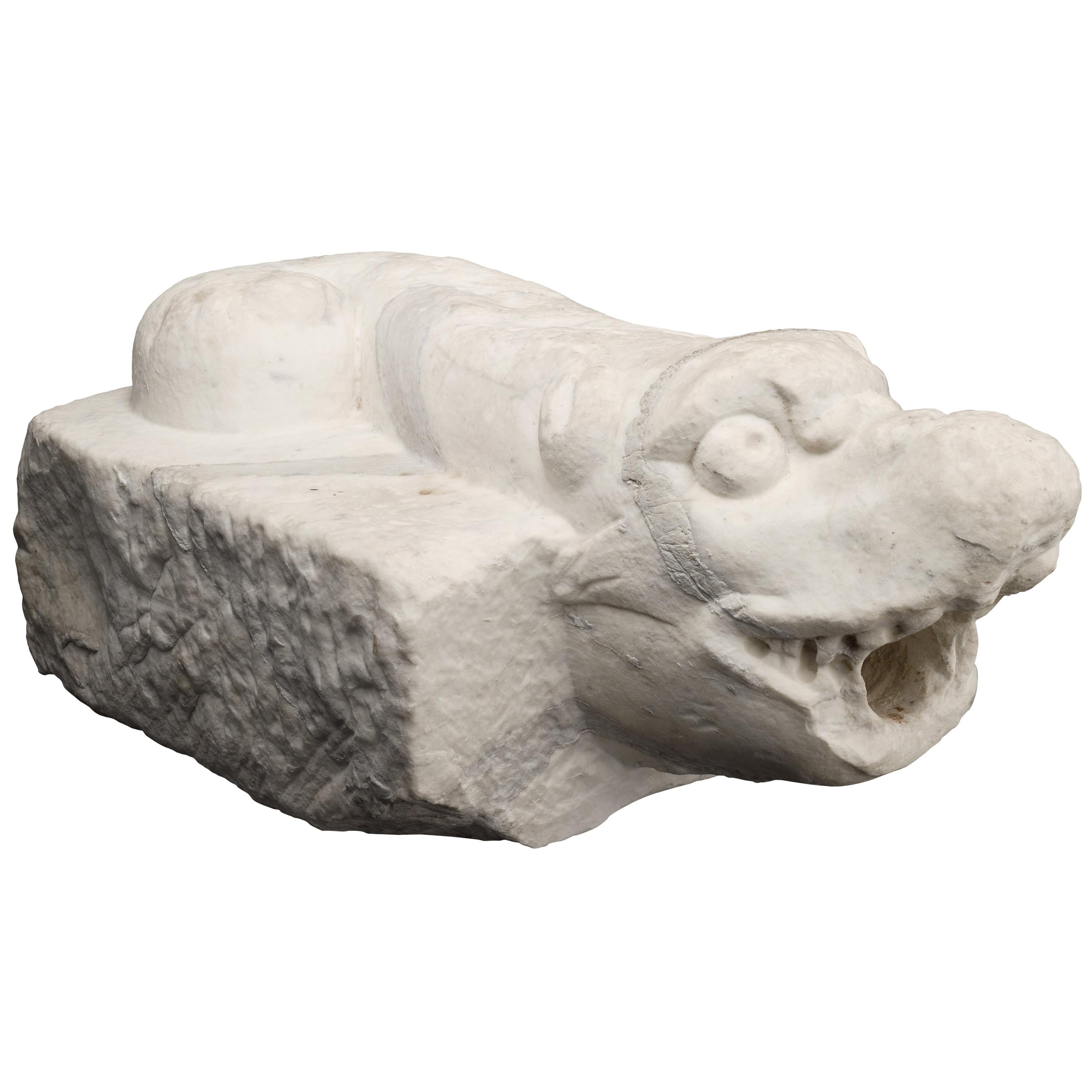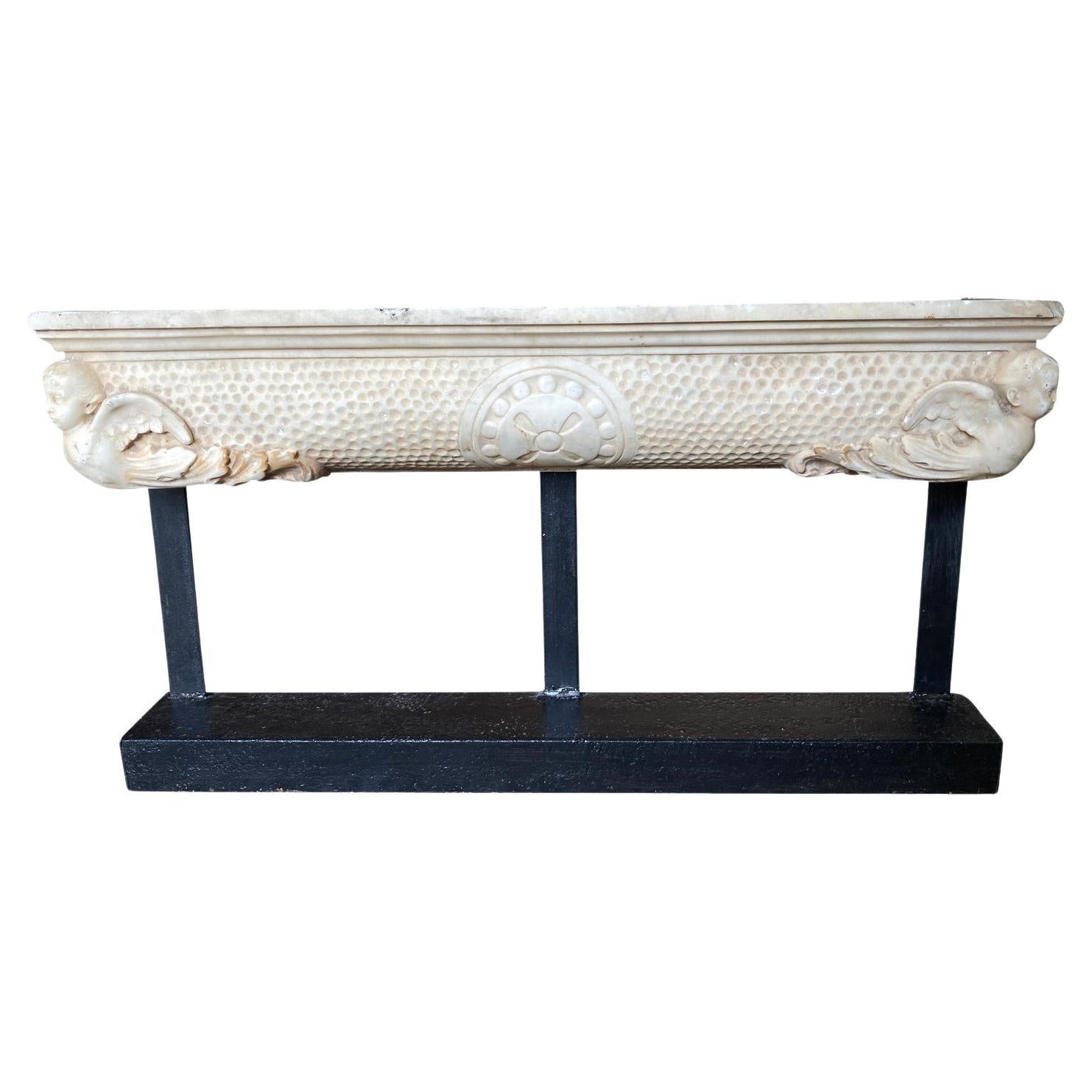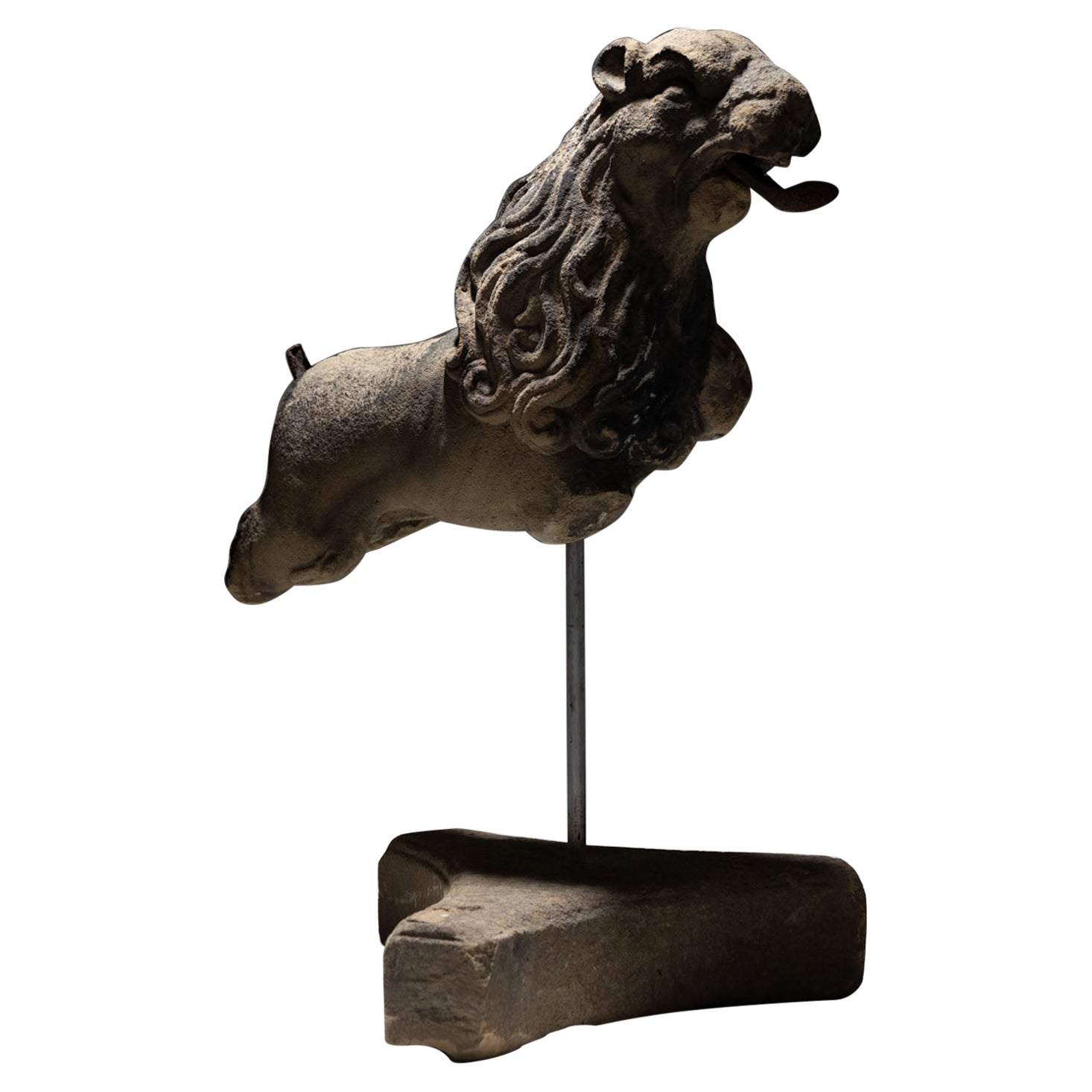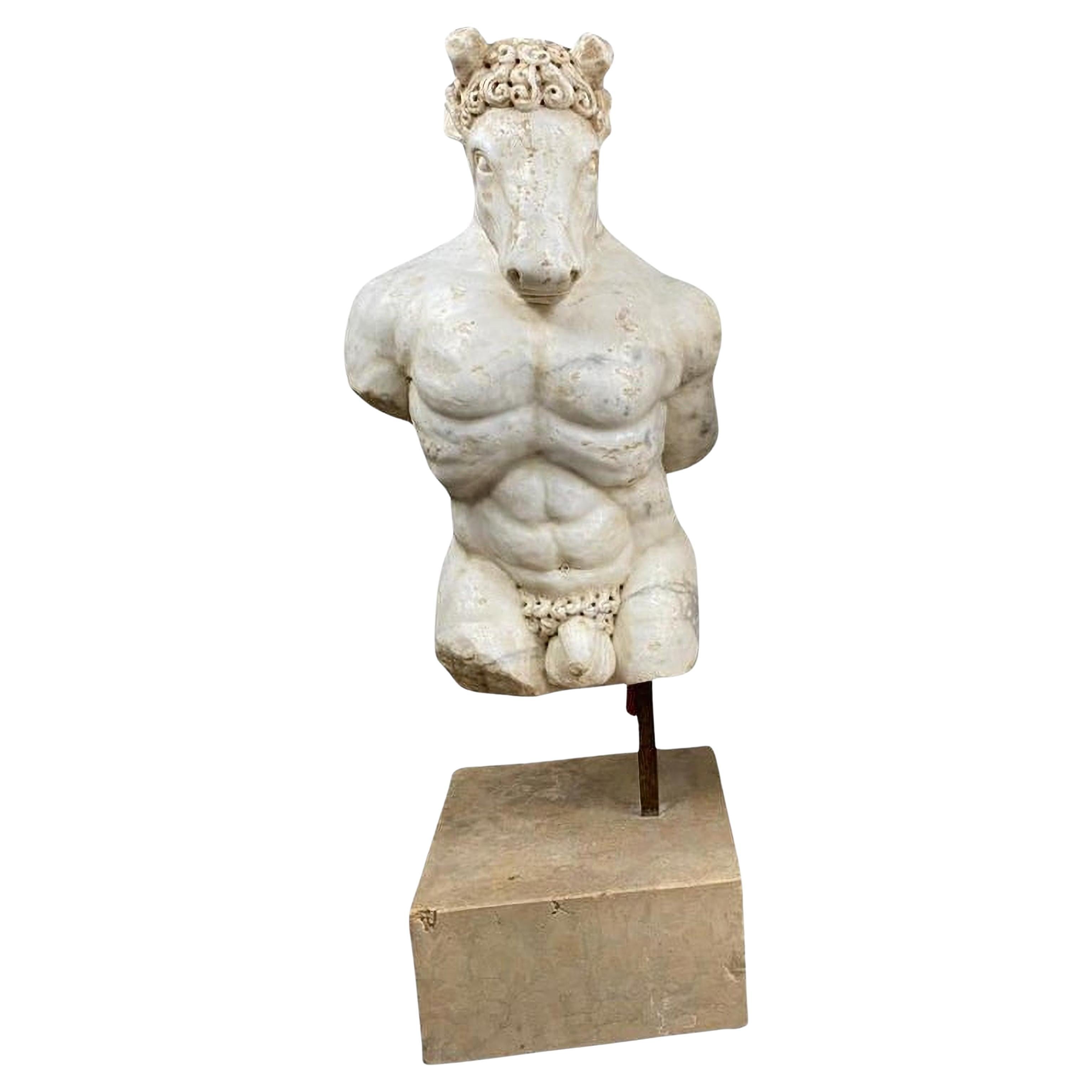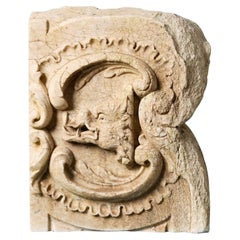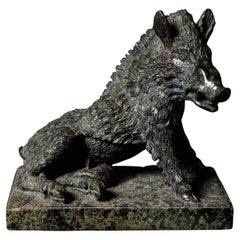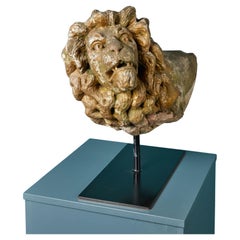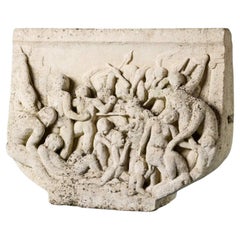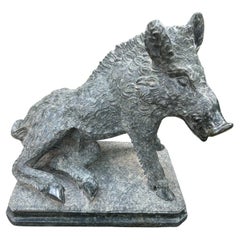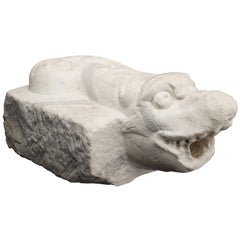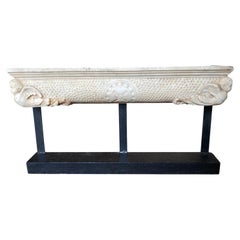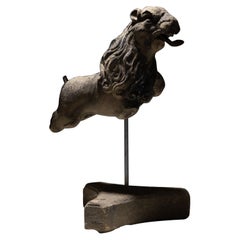Items Similar to 'The Calydonian Boar' 15th Century Italian Marble Fragment
Want more images or videos?
Request additional images or videos from the seller
1 of 9
'The Calydonian Boar' 15th Century Italian Marble Fragment
$31,818.82
£22,975
€27,023.79
CA$43,287.03
A$48,101.44
CHF 25,205.66
MX$589,878.39
NOK 321,483.55
SEK 302,439.92
DKK 201,694.08
Shipping
Retrieving quote...The 1stDibs Promise:
Authenticity Guarantee,
Money-Back Guarantee,
24-Hour Cancellation
About the Item
A large antique Italian marble fragment depicting a section of the Calydonian Boar Hunt. Likely once forming part of a great carved frieze, this marble fragment is thought to be 600 years old, dating from as early as the 15th century. It is exceptionally detailed, the intricate carving still as clear and distinctive as it would’ve been centuries ago.
The fragment depicts the Greek hero Meleager sat in a reclining position with arm resting on the head of the Calydonian boar. A dog sits beside him while a spear, bow, quiver of arrows and a shield sit at his feet. Though his head is lost, Meleager exudes strength and status with his athletic torso bare and flaunting posture.
The Calydonian Boar Hunt
The story of the Calydonian Boar dates back to Ancient Greece, predating the times of famed poets Hesiod and Homer. Roman poet Ovid (born circa 43 BC) retells the story in Book VIII of the Metamorphoses, his most famous work: an epic poem that chronicles the history of the world through mythological tales.
According to legend, Artemis, Greek goddess of wild animals and the hunt, released a terrifying boar upon King Oeneus of Calydon’s land. In a bid to slay the beast, the King enlisted his son, Meleager, and an assembly of warriors to hunt the boar. After much difficulty, Meleager defeated the boar, presenting its head as a trophy to his beloved, the huntress Atlanta.
A famous painting depicting the Calydonian Boar Hunt dating to circa 1611 – 1612 by Flemish artist Peter Paul Rubens resides in the Getty Museum, California. It depicts the strong warrior Meleager, mostly nude other than swathes of red drapery, thrusting his spear into a huge boar. He is assisted by hounds and warriors, including the huntress Atlanta who wields a bow behind him.
- Dimensions:Height: 11.03 in (28 cm)Width: 19.1 in (48.5 cm)Depth: 1.97 in (5 cm)
- Style:Renaissance (In the Style Of)
- Materials and Techniques:
- Place of Origin:
- Period:
- Date of Manufacture:1400
- Condition:Good structural condition fragment. No repairs. Wax finish.
- Seller Location:Wormelow, GB
- Reference Number:Seller: 9357081stDibs: LU2096340203102
About the Seller
4.9
Platinum Seller
Premium sellers with a 4.7+ rating and 24-hour response times
Established in 2006
1stDibs seller since 2016
694 sales on 1stDibs
Typical response time: 9 hours
- ShippingRetrieving quote...Shipping from: Wormelow, United Kingdom
- Return Policy
Authenticity Guarantee
In the unlikely event there’s an issue with an item’s authenticity, contact us within 1 year for a full refund. DetailsMoney-Back Guarantee
If your item is not as described, is damaged in transit, or does not arrive, contact us within 7 days for a full refund. Details24-Hour Cancellation
You have a 24-hour grace period in which to reconsider your purchase, with no questions asked.Vetted Professional Sellers
Our world-class sellers must adhere to strict standards for service and quality, maintaining the integrity of our listings.Price-Match Guarantee
If you find that a seller listed the same item for a lower price elsewhere, we’ll match it.Trusted Global Delivery
Our best-in-class carrier network provides specialized shipping options worldwide, including custom delivery.More From This Seller
View All17th Century Marble Boars Head Sculpture
Located in Wormelow, Herefordshire
A carved architectural marble fragment depicting a boars head, reclaimed from Pentney Abbey, Norfolk.
Dating to circa 1680, this freestanding animal sculpture displays a striking st...
Category
Antique Late 17th Century Italian Neoclassical Busts
Materials
Marble
Antique Italian Serpentine Sculpture after the Uffizi Boar
Located in Wormelow, Herefordshire
An antique Italian carved serpentine sculpture after the Uffizi boar dating to the early 19th century.
This seated wild boar displays impressive carved details and a pleasing scale ...
Category
Antique Early 19th Century Italian Grand Tour Animal Sculptures
Materials
Serpentine
Carved Stone Lion Fragment on Stand
Located in Wormelow, Herefordshire
Antique carved stone Lion fragment. A mounted sandstone lion head, once part of an armorial crest. North of England.
Category
Antique Early 19th Century English Mounted Objects
Materials
Stone, Steel
Carved Antique Stone Sculpture by a Student of Hugh Casson
Located in Wormelow, Herefordshire
This weathered antique stone sculpture was reputedly carved by a student of 20th century British architect and artist, Sir Hugh Casson. It depi...
Category
Mid-20th Century English Neoclassical Figurative Sculptures
Materials
Stone, Limestone
Antique Limestone Statue of The Uffizi Boar
Located in Wormelow, Herefordshire
After the antique, a finely modelled and weathered limestone garden ornament.
This classical sculpture is generally thought to be based on the story of the slaying of the Calydoni...
Category
20th Century English Grand Tour Statues
Materials
Limestone
Monumental York Stone Carving After the Parthenon Frieze
Located in Wormelow, Herefordshire
A huge, weathered York stone carving of a neoclassical or Roman figure on horseback after the antique 6th century BC Greek Parthenon Frieze. Spanning approximately 1.9 x 1.2 m (6ft x...
Category
20th Century English Neoclassical Statues
Materials
Stone
You May Also Like
Italian Carved Marble Boar Sculpture
Located in Houston, TX
Italian Carved Marble Boar Sculpture.
We offer a well carved copy of the original Italian marble boar sculpture located in Florence Italy. This version...
Category
Vintage 1920s Italian Classical Roman Animal Sculptures
Materials
Marble
Italian Ancient Marble Sculpture Fountain, Late 16th Century
Located in Milano, IT
Sea monster
Carrara marble mouth fountain
Italy, late 16th century
It measures 13.8 x 31.5 x 18.9 in (35 x 80 x 48 cm)
State of conservation: some small evident gaps and widespread signs of wear due to outdoor exposure. The gray marks crossing it do not come from restoration, but are rather the natural veins of the marble.
This work has some morphological characteristics typically associated with the iconography of the sea monster: an elongated muzzle, sharp teeth, protruding eyes, elongated ears, and a coiled serpent's tail.
An in-depth series of studies on artistic depictions of the sea monster attempted to verify how this symbol evolved in antiquity in the European and Mediterranean contexts and how it gradually changed its image and function over time. The iconography itself is mutable and imaginative and its history is rich with cultural and artistic exchange, as well as the overlapping of ideas. This occurred so much that it is difficult to accurately pinpoint the "types" that satisfactorily represent its various developments.
However, we can try to summarize the main figures, starting from the biblical Leviathan and the marine creature that swallowed Jonah (in the Christian version, this figure was to become a whale or a "big fish", the “ketos mega”, translation of the Hebrew “dag gadol”). Other specimens ranged from the dragons mentioned in the Iliad (which were winged and had legs) to "ketos” (also from Greek mythology), the terrifying being from whose Latinized name (“cetus”) derives the word "cetacean". See J. Boardman, “Very Like a Whale” - Classical Sea Monsters, in Monsters and Demons in the Ancient and Medieval Worlds, in Papers presented in Honor of Edith Porada, Mainz am Rhein 1987, pp. 73-84).
In Italy the monster underwent yet further variations: it can be found in Etruscan art on the front of some sarcophagi representing the companion of souls, while among the Romans we find the “Pistrice” (cited by Plinio in Naturalis Historia PLIN., Nat., II 9, 8 and by Virgilio in Eneide: VERG., Aen., III, 427), which appeared in the shape of a stylized hippocampus or a very large monstrous cetacean and evolved into a hideous being with a dragon's head and long webbed fins.
During the Middle Ages, the sea monster was the object of new transformations: at this time, it is often winged, the head is stretched like a crocodile, the front legs are often very sharp fins - sometimes real paws - until the image merges with dragons, the typical figures of medieval visionary spirituality widely found throughout Europe (on this topic and much more, see: Baltrušaitis, J., Il Medioevo fantastico. Antichità ed esotismi nell’arte gotica, Gli Adelphi 1997).
In Italy during the 15th and 16th centuries, the revival of classicism - representative of the humanistic and Renaissance periods - led to a different reading of these "creatures". Indeed, the sea monster was also to find widespread use as an isolated decorative motif, especially in numerous fountains and sculptures where dolphins or sea monsters were used as a characterizing element linked to water (on this theme see: Chet Van Duzer, Sea Monsters on Medieval and Renaissance Maps, London, The British library, 2013).
From the morphological point of view, the "sea monsters" of this period are mostly depicted as hybrid figures, in which the body of a mythological or real being (a hippocampus, a sea snake, a dolphin), is joined to a head with a rather indistinct appearance. It was usually characterized by large upright ears, an elongated snout, sharp teeth and globular, protruding eyes; a complex and indefinite figure, both from the symbolic point of view and from that of its genesis.
The work we are examining is placed as a cross between the medieval sea serpent and the Renaissance dolphin, with stylistic features which recall the snake as often used in heraldry (such as the "snake" depicted in the coat of arms of the Visconti - the lords and then dukes of Milan between 1277 and 1447 - and which, for some, may be derived from the representations of the “Pistrice” that swallowed Jonah).
In the search for sources, Renaissance cartography and in particular woodcuts should not be neglected. See for example the monsters of Olaus Magnus, from the editions of the “Historia de gentibus septentrionalibus” (“History of the peoples of the north”) and the natural histories of Conrad Gesner, Ulisse...
Category
Antique 16th Century Italian Renaissance Animal Sculptures
Materials
Carrara Marble
Italian 16th Century Marble Fragment
Located in Round Top, TX
A very stunning 16th century Marble Fragment from the Veneto region of Italy. Beautifully carved with angels or putti and now mounted on its iron...
Category
Antique 16th Century Italian Architectural Elements
Materials
Marble
Fragment of a Lion made of Sandstone, 17th Century
Located in Greding, DE
Sculpture of a lion preserved in fragmentary condition with curved iron tongue and long mane. The iron tail is still present as a remnant. There is an iron ring on the back. The lion...
Category
Antique 17th Century German Statues
Materials
Sandstone
AMAZING MARBLE FIGURE OF THE MINOTAUR, 17th Century Baroque Style, Italy.
Located in Madrid, ES
MARBLE FIGURE OF THE MINOTAUR, 17th Century
Baroque Style, Italy.
Beige/grey marble. Minotaur on a rectangular "Rosso di Verona" base. H (without base) 81 cm.
H (without base) 81 c...
Category
Antique 17th Century Italian Baroque Figurative Sculptures
Materials
Marble
French Medieval Carved Stone Fragment Depicting A Dragon/ Mythical Figure
Located in Buisson, FR
Amazing period piece. Beautiful hand-carved fragment depicting a dragon / mythical creature. Once had its place in wall of a medieval church or chapel in the South of France. Weather...
Category
Antique 15th Century and Earlier French Medieval Mounted Objects
Materials
Stone
$5,088 Sale Price
37% Off
More Ways To Browse
15th Century Italian
Large Italian Marble Sculpture
Marble Fragment
Ancient Fragment
Italian Renaissance Marble
Ancient Greek Marble
Marble Sculpture Fragment
Marble Feet Sculpture
Antique Marble Head
Marble Goddess
Italian Renaissance 15th Century
Large Antique Fragment
Roman Fragment
Roman Marble Head
Greek Warriors
Greek Torso
Greek Marble Head
Marble With Dog
